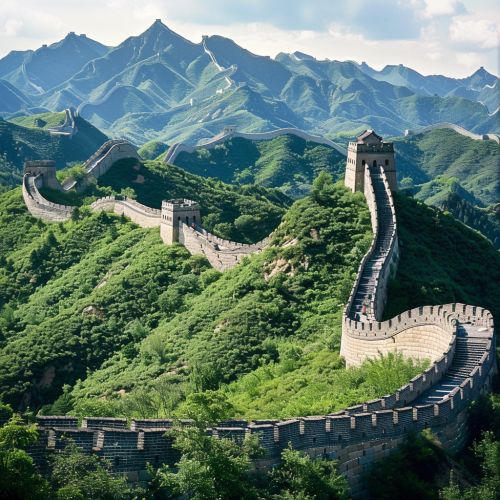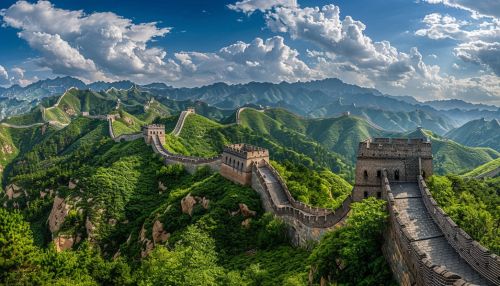Great Wall of China
History
The Great Wall of China, one of the greatest wonders of the world, was enlisted in the World Heritage by UNESCO in 1987. Just like a gigantic dragon, the Great Wall winds up and down across deserts, grasslands, mountains and plateaus, stretching approximately 21,196 kilometers from east to west of China. With a history of more than 2000 years, some of the sections are now in ruins or have disappeared. However, it is still one of the most appealing attractions all around the world owing to its architectural grandeur and historical significance.
The Great Wall of ancient China was built in Spring and Autumn, and Warring States Periods as a defensive fortification by the three states: Yan, Zhao and Qin. The Great Wall went through constant extensions and repairs in later dynasties. In fact, it began as independent walls for different states when it was first built, and did not become the "Great" wall until the Qin Dynasty. Emperor Qin Shihuang succeeded in his effort to have the walls joined together to fend off the invasions from the Huns in the north after the unification of China.
Architecture
The Great Wall has been built since the 6th century BC and it is the most extensive construction project ever completed. It consists of numerous walls and fortifications. The most comprehensive archaeological survey, using advanced technologies, has concluded that all the walls measure 21,196 km. The main wall is 3,460 km long, with an additional 2,860 km of branches and spurs.
The wall, made of wood, stones, grass and earth, in the early days, was eventually replaced by bricks and tiles later on during the Ming Dynasty. The wall is wide enough at the top that it can accommodate five horses or ten soldiers side by side. Along the wall are placed watchtowers for soldiers to keep an eye out for enemies.
Significance
The Great Wall of China is an important symbol of China's history and a significant piece of ancient defensive architecture. Its historic and strategic importance is matched only by its architectural significance. Protection of the empire was the main reason behind its construction. The wall protected China for over 2,000 years, and while it did not prevent invaders from entering China, it did provide a line of defense, which bought time for the Chinese to prepare.
Tourism
The Great Wall of China is a UNESCO World Heritage Site and a popular tourist destination. The most visited section of the Great Wall is in Badaling, close to Beijing, which was the first section to be opened to the public in the People's Republic of China. Other notable sections include those at Mutianyu, Jinshanling, and Simatai.
See Also
- History of China - Chinese Architecture - UNESCO World Heritage Sites


